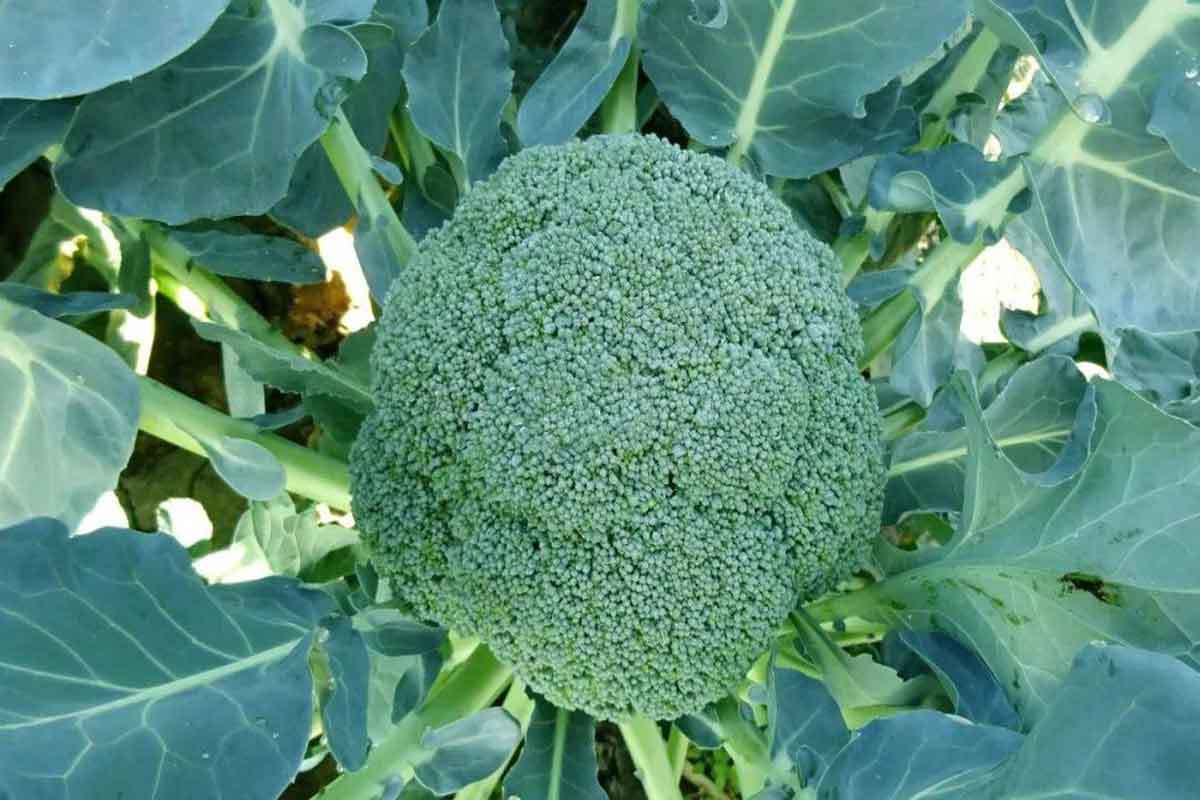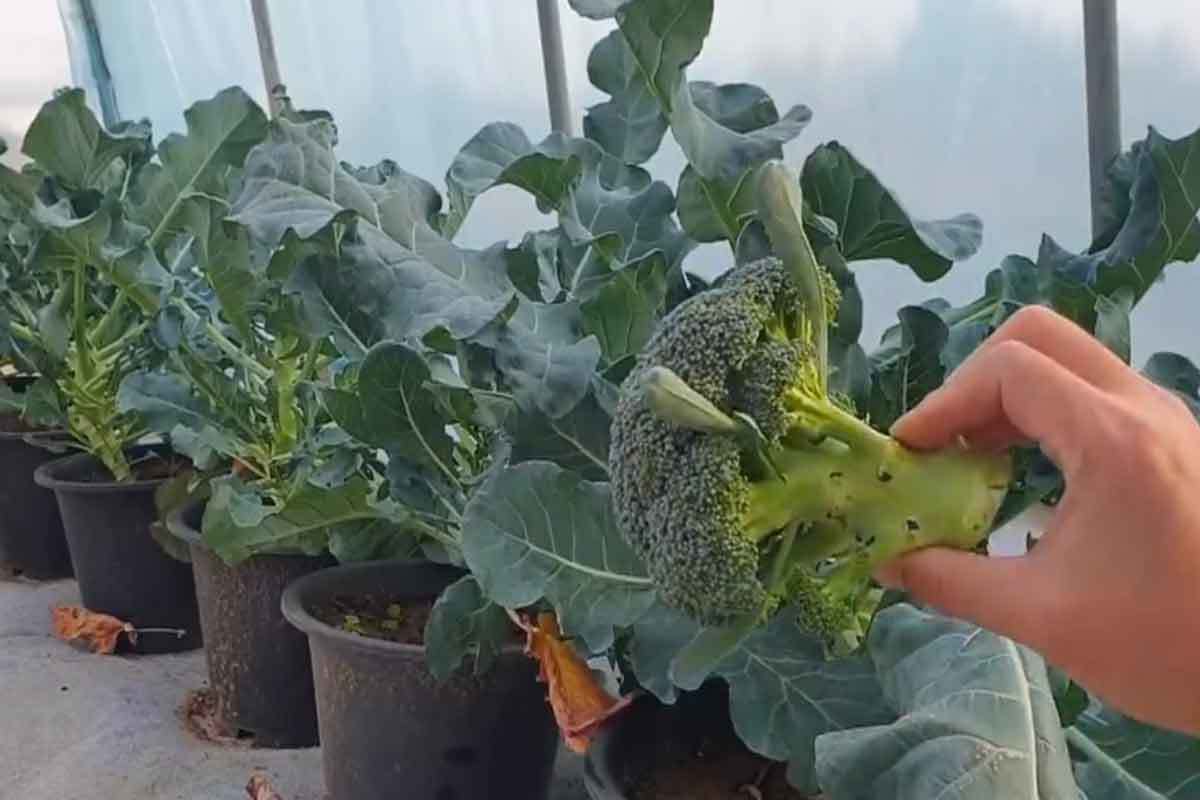How To Grow Broccoli In Pots - Wilson Garden
What is broccoli?
The broccoli plant is an annual vegetable. It grows into a flowering plant with edible flowers and leafy shoots. Broccoli will grow about 2 to 3 feet tall. This vegetable is popular in Asian markets. It is often used as a garnish on meals. Nutritionally, broccoli offers fiber, calcium and vitamins.
Is broccoli difficult to grow?
Broccoli is relatively easy to grow. You can grow broccoli indoors or outdoors. You should plant it in a sunny spot with well-drained soil. Keep broccoli well watered when the plant matures. Because dry roots will make the broccoli grow smaller than its potential size.
Can you grow broccoli in pots?
Does broccoli grow well in containers? Generally, broccoli does grow well in nursery pots. You can grow broccoli in black plastic pots or root pouch grow bags.
How deep do pots need to be for broccoli?
If you are growing broccoli in pots, make sure your plastic pots are at least 12 inches deep. For example, 15 gal nursery pots. The broccoli plants will have plenty of room to spread their roots. With a larger container or bigger pot, you can amend with more compost and use fewer waterings per day.
What type of soil is best for growing broccoli?
Broccoli, or Brassica oleracea, is grown for its edible flower buds. As a member of the cabbage family, broccoli needs full sun and rich, fertile soil to produce the best crops. If using loam, add some compost or other organic material. Then it won't clog up the drainage holes. The soil should not be too wet and rich in nitrogen.
How much soil does broccoli need?
Broccoli needs 2 to 4 inches of rich compost or a thin layer of well-aged manure. Plant the broccoli with their roots facing down. Leave at least 4 inches of room between each plant. Keep your seedlings moist at all times. Make sure they’re getting enough sun. Water the plants well until they’re established and growing well.
What month do you plant broccoli?
Broccoli is a cool season vegetable. It's at its best during spring and fall. The common time to plant broccoli is early to mid-April. For the fall crop, planting in early to late July will give you a good harvest.
If you live in zone 6 or lower, plant seeds one to three weeks early. You should plant them as soon as the soil warms up. Most varieties mature in 55 to 60 days from transplanting.
How many broccoli seeds should I plant?
You can grow broccoli in the ground. Plant one or two seeds in each hole. Space your plants about 18 inches apart. Broccoli plants are fast growing and you can space them more. But you'll need to thin plants if you crowd them together. It is best to plant during the cool months. After this time window, temperatures are too warm for the vegetables to grow properly.

How to grow broccoli in pots?
Planting broccoli in pots is easy. You need to select the best container to grow broccoli first. The pos should have drainage holes at the bottom. The pot size for growing broccoli should be at least 8 inches in diameter and 12 inches deep. You should plant broccoli in a mixture of half sterilized potting soil and peat moss.
Start by planting your seeds directly in the nursery pots, or you can start inside and transplant later. Fill your planting hole with compost. Add 1/2 cup of 5-10-15 fertilizer to each hole. Plant broccoli seedlings into the soil 1 to 2 inches deep. Keep plants growing at 60 to 68 degrees F(not too hot, not too cold). Water and fertilize regularly.
What kind of fertilizer does broccoli need?
Broccoli is a heavy feeder. So you can use fertilizer high in nitrogen. For example, ammonium sulfate or ammonium phosphate. Fertilize according to package instructions. It is important to feed your plants frequently and with the finest nutrients. Otherwise, they will likely be stunted and produce deformed heads.
How often do you fertilize broccoli?
When growing broccoli in containers, you can use two pounds of 5-10-15 fertilizer each month during the growing season or equivalent per 100 square feet of bed. You should change the amount of fertilizer when you begin planting for next year's crop. Because broccoli is a cool-season crop and does not grow all year round.
How often do you water broccoli?
Water broccoli in containers once every 4-5 days. You should water a depth of ½ inch when the soil surface is dry. Broccoli needs plenty of water, especially when the heads are forming and developing. You use drip irrigation or soaker hose to prevent running off.
Does broccoli need sun or shade?
Broccoli needs full sun for best results. So choose a location with at least six hours of sunlight each day. Shady areas can still produce broccoli. But the leaves will be smaller than the ones grown in the direct sun.
How long does it take for broccoli heads to form?
Broccoli produces best in temperatures between 45 and 75 degrees Fahrenheit. It takes approximately 70 days from transplanting to harvest of broccoli heads. They are around 4 to 5 inches in diameter or larger when harvesting.
How much broccoli can you get from one plant?
Broccoli is a cool season vegetable and each plant yields many florets. Broccoli in pots will yield one large head per plant. When you harvest the main head, the broccoli may produce some smaller side flower heads.
What is the common disease in broccoli?
Broccoli is affected by the same diseases as its relatives, cabbages and other brassicas. The common disease in broccoli is downy mildew caused by Peronospora parasitica.
Downy mildew is a leaf, bud and stem disease that causes brown spots on leaves. If you notice black or brown spots on the broccoli leaves, it may be a fungal leaf spot. The fungus survives in the soil and can overwinter on plant debris. The disease usually goes away if the affected plants are removed quickly.
What pests affect broccoli?
Like most plants, broccoli is susceptible to different pests. Come pests include aphids, caterpillars, whiteflies, aphids etc. Aphids are small insects that feed on plants. They cause damage by sucking out their juices. Caterpillars are damaging because they chew through the stems of the plant.
You may find them on broccoli plants at the same time. To stop these pests from affecting your broccoli, you should maintain good garden sanitation by removing debris and weeds.
You can control these pests by covering plants with floating row covers. Or applying oil based sprays when you see them on your plant. You can take preventative measures to keep your broccoli healthy and delicious.

How do you know when broccoli is ready to harvest?
The broccoli is ready to harvest when they're deep green with small, tightly packed buds. When the head of broccoli starts to flower or begins to show any signs of yellowing, you should harvest it immediately.
How to harvest broccoli?
Harvest Broccoli when the florets are well-developed and surrounded by firm, tight buds that are free of yellow or browning. When your broccoli heads are ready to harvest, cut back on water and stop fertilizing. Harvesting starts at the outside of the plant, with larger leaves being stripped first. Leave smaller foliage to keep producing broccoli heads.
Cut the stalk where it meets the main head, using a sharp knife to cut through both florets and stalk. Since many of these plants are heading into their final growth stage, removing this central stem can reduce the size of other branches to prevent overgrowth. Continue harvesting for several days as needed until you've harvested all of the broccoli in your garden.
Should I trim my broccoli plants?
You should trim your broccoli plants. Cut off all the branches and leaves that aren't producing heads. This will help the remaining growing shoots produce bigger heads and more fruits.
How many years do broccoli plants live?
This depends on the variety. Most broccoli plants are annual and they will live for just one year. However, some varieties of broccoli may live up to two years.
How do I protect my broccoli in the winter?
Allowing your broccoli to remain in the garden through the fall can help protect it from frost. If your plant has already been hit by a freeze, prune off any damaged leaves. Protect it with frost blankets or row covers. Remove the cover in the morning when the temperature rises above freezing. Then replace it at night.
Spread an organic mulch over the soil (2-3" deep) near harvest time. This keeps the ground from freezing too deeply and damaging new growth. These covers provide warmth and protection from frost, wind, and rain while allowing sunlight to penetrate into the soil. Mulching also moderates soil moisture. So less frequent irrigation will be necessary during cold periods.
Why is my broccoli plant only growing leaves?
If your broccoli is not growing well, it can be due to underwater or over-fertilizing. The plant needs a little water when it starts to grow in order for the baby leaves to develop. If you overwater and saturate the soil, it can lead to root rot. This will cause your broccoli plant to die.
With over fertilizing, you risk burning your plants' roots and not producing a typical central head. Broccoli needs to be fertilized regularly when growing. However, never more than ¼ cup of balanced fertilizer at a time.
You should keep the temperature 55-65 degrees Fahrenheit. If your broccoli plant sits outside in the heat or sun, it will show its displeasure by only growing leaves instead of a nice head of broccoli.
What makes broccoli grow faster?
You should plant broccoli in well drained soil which has rich manure or compost. Wait 1-2 days between waterings. Mix in some compost to encourage root growth. You should pull up weeds that may be competing for nutrients.
Broccoli is a cool seasoned vegetable and requires moderate temperatures. It can withstand some shade but does best in full sun. Broccoli prefers fertile, well-drained soil high in organic matter.
What not to plant with broccoli?
Broccoli is very happy in most fields. But it doesn't like to be exposed to raw tomatoes, eggplants or beans. Because these can kill it. When planting broccoli, don't plant with any other members of the Brassica family. For example, cabbage or Brussels sprouts. Broccoli is also highly sensitive to chilli peppers and hornworms, which will leave their mark and target other tasty plants nearby.


